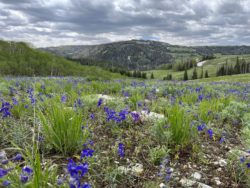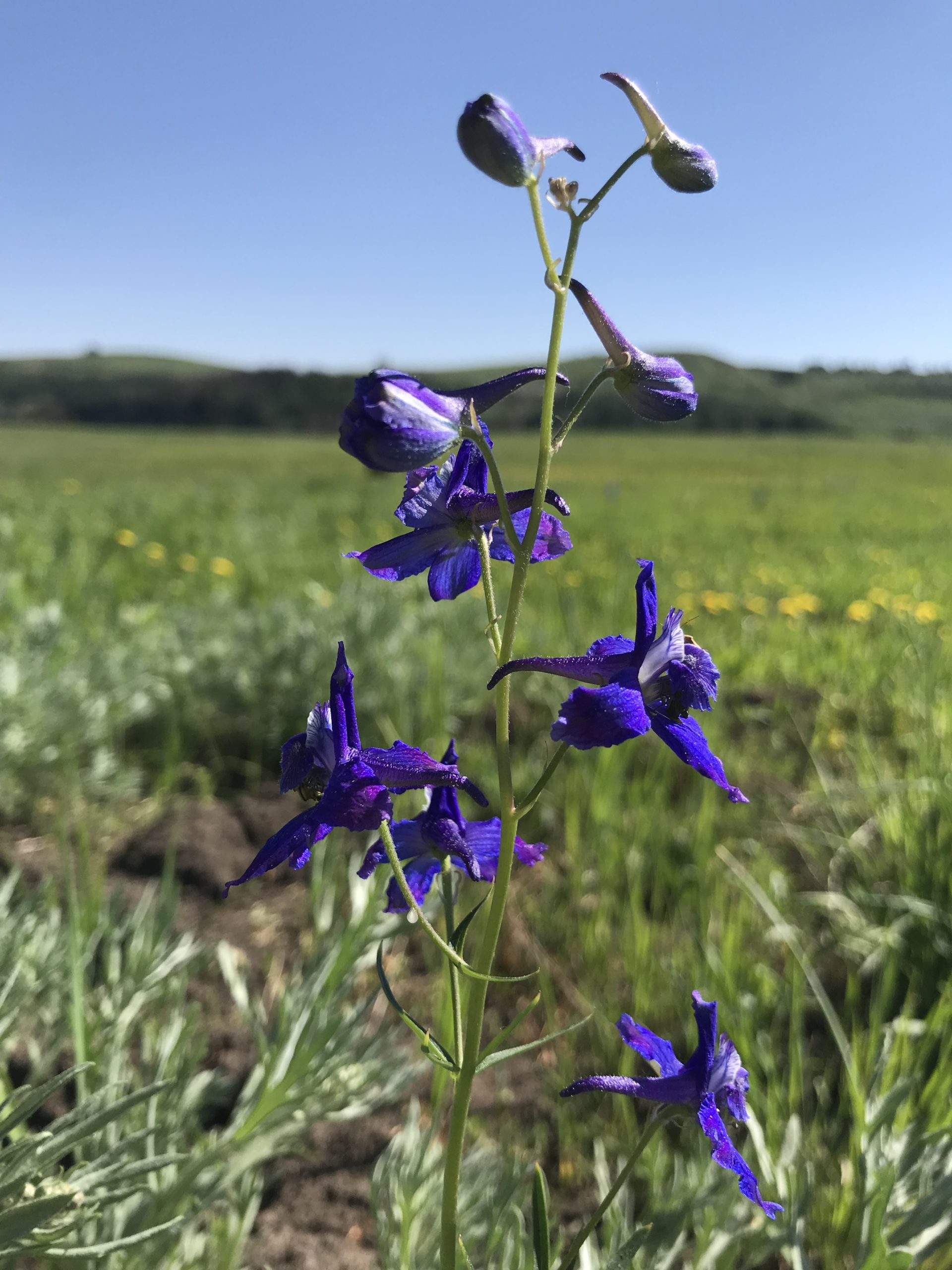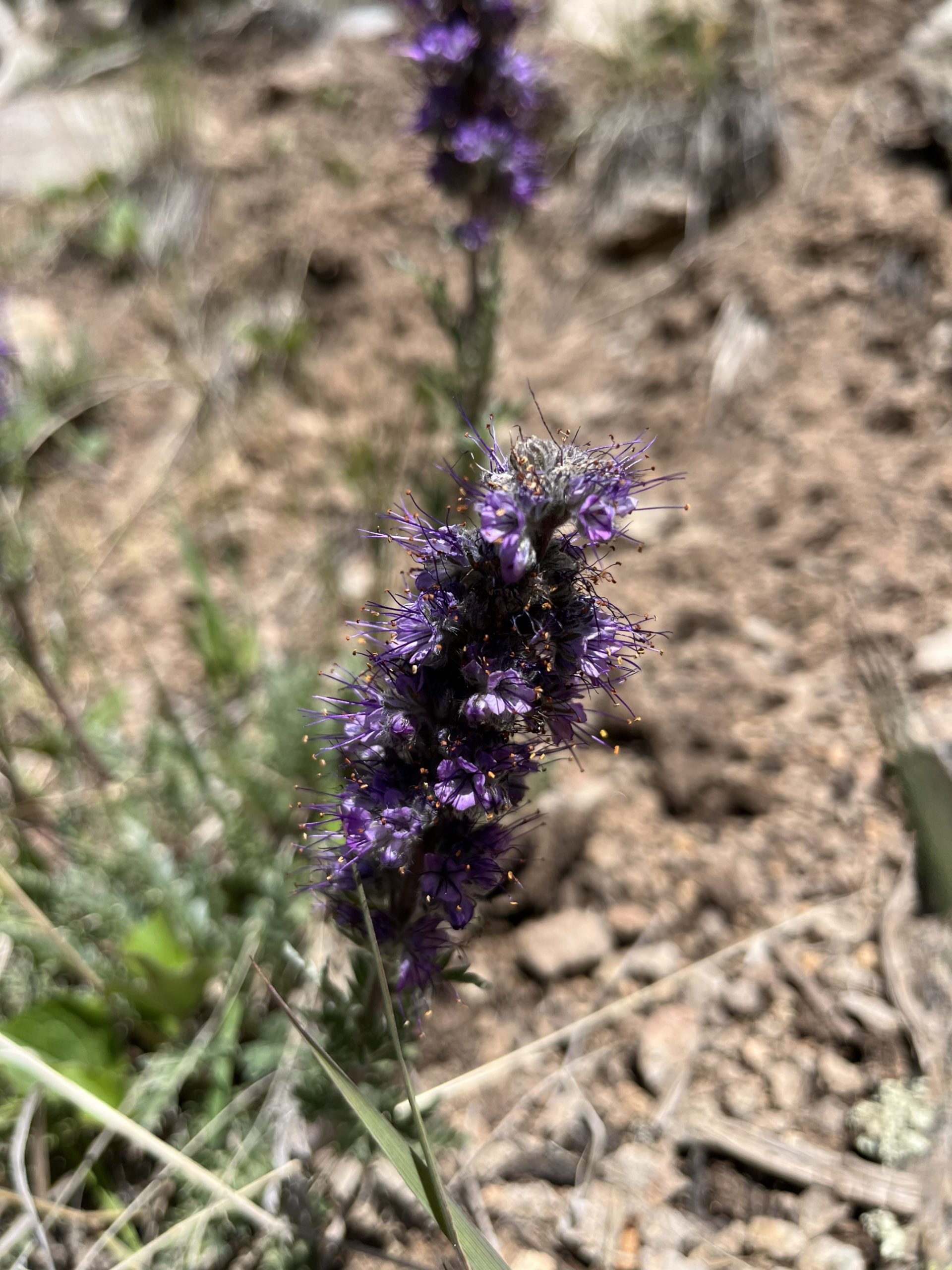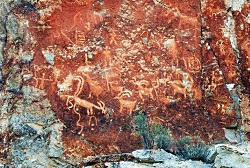
Manti LaSal Majesty
Courtesy & © Shannon Rhodes, Photographer
Shooting Star
Courtesy & © Shannon Rhodes, Photographer
Larkspur
Courtesy & © Shannon Rhodes, Photographer
Scorpionweed
Courtesy & © Shannon Rhodes, Photographer
There are two lines in the patriotic hymn “America the Beautiful” that really sing to me. One is “Who more than self their country loved,” honoring history’s heroes, and the other I exclaim each time I stumble upon an alpine meadow in bloom. Decades ago my friend Amberly and I borrowed the phrase “purple mountain majesties” as we gazed at the larkspur dotting our way to Emerald Lake, and it has been a common exclamation for me ever since. The purple aster, bluebell, clover, monkshood, penstemon, and silvery lupine also complement the evergreens and azure skies in a way that takes my breath away, begging to be captured by camera, paint, and pen.
This fourth of July I compose this piece sitting not too far away from the Colorado mountain peak where Katharine Lee Bates sat in 1893 as she penned the first draft of her poetic “Oh beautiful for spacious skies” stanzas. She had traveled from her post teaching English at Wellesley College in Massachusetts, visiting Niagara Falls, Chicago’s Columbian Exposition, and Kansas grainfields on her first trip west to Colorado Springs, where she would be teaching a summer school session.
She and her fellow instructors took a “merry expedition” to an overlook on Pikes Peak and were immediately struck by the beauty. “It was then and there,” she wrote, “as I was looking out over the sea-like expanse of fertile country spreading away so far under those ample skies, that the opening lines of the hymn floated into my mind.”
Two years after setting the manuscript aside as busy writers often do, she revisited her notebook scribblings and published what she described as “a more literary and ornate” version than we now know it for that fourth of July. In a letter dated October 8, 1919, acquaintance Robert Frost wrote to Miss Bates his sentiment that “free rhythms are as disorderly as nature.” I will admit that most of my poems, Mr. Frost, do not follow strict rules of rhyme and meter like yours and Katharine’s do, but just the same I admire the higgledy-piggledy scorpionweed’s violet bottlebrush clusters and haphazardness of the larkspur petals standing before me.
Frost’s third poetry collection titled “Mountain Interval” inspires me to record the explosive colors of the wildflowers I see as I watch fireworks spatter and scatter against the silhouette of the Rockies, mimicking the shootingstar flowers with their purple petals swept backwards that punctuate the path. Bates wasn’t writing about wildflowers as much as she was the geologic wonders and expansive views from 14,000 feet, but I can feel poems emerging from both.
In Nancy Churnin’s picture book biography “For Spacious Skies,” Katharine Lee Bates says, “Most glorious scenery I ever beheld,” and each wildflower cascading lavender from its sparkler-wand stem molds the makings of other poems celebrating the majestic allure of this land.
I’m Shannon Rhodes, and I’m wild about Utah.
Credits:
Images: Courtesy & Copyright Shannon Rhodes, Photographer
Additional Audio: Courtesy & © Kevin Colver https://wildstore.wildsanctuary.com/collections/special-collections as well as J. Chase and K.W. Baldwin https://upr.org.
Text: Shannon Rhodes, Edith Bowen Laboratory School, Utah State University https://edithbowen.usu.edu/
Additional Reading Links: Shannon Rhodes
Additional Reading:
Bates, Katharine Lee. ca. 1925. Falmouth Historical Society’s Museums on the Green. Massachusetts. https://museumsonthegreen.org/wp-content/uploads/Katharine-Lee-Bates-describes-how-she-wrote-America-The-Beautiful-after-1922-signed.pdf
Churnin, Nancy. 2020. For Spacious Skies: Katharine Lee Bates and the Inspiration for “America the Beautiful.” Park Ridge, Illinois: Albert Whitman and Company. https://www.nancychurnin.com/forspaciousskies, https://www.nancychurnin.com/thekidsareallwrite/2019/8/3/happy-birthday-wishes-for-katharine-lee-bates-poet-of-america-the-beautiful
Author, Nancy Churnin, reads her new book For Spacious Skies! https://www.youtube.com/watch?v=cXyANvok7sE
Frost, Robert. 1919. Letter from Robert Frost, Amhurst, Massachusetts, to Katharine Lee Bates: autograph manuscript signed 1919, October 8. Wellesley College Digital Repository Special Collections. https://repository.wellesley.edu/object/wellesley31310
Frost, Robert. 1916. Mountain Interval. New York: Henry Holt and Company. https://www.gutenberg.org/files/29345/29345-h/29345-h.htm
Kratz, Andrew. Nuttall’s Larkspur. U.S. Department of Agriculture’s Forest Service. https://www.fs.fed.us/wildflowers/plant-of-the-week/delphinium_nuttallianum.shtml
Flowers in the Aspen Groves, Rocky Mountains, Utah, U.S. Department of Agriculture’s Forest Service. https://www.fs.fed.us/wildflowers/beauty/aspen/flowers/utah.shtml
Ponder, Melinda M. 2017. Katharine Lee Bates: From Sea to Shining Sea. Chicago: Windy City Publishers. https://www.melindaponder.com/the-book.html
The Gilder Lehrman Institute of American History. America the Beautiful: 1893: A Spotlight on a Primary Source by Katharine Lee Bates. https://www.gilderlehrman.org/history-resources/spotlight-primary-source/america-beautiful-1893
Westervelt, Eric. 2019. Greatness Is Not a Given: America the Beautiful Asks How We Can Do Better. NPR’s American Anthem. https://www.npr.org/2019/04/04/709531017/america-the-beautiful-american-anthem







